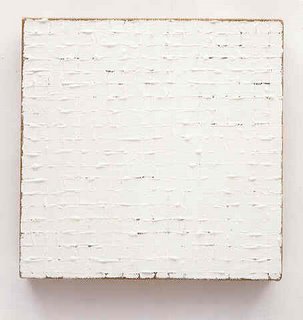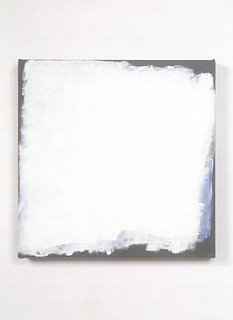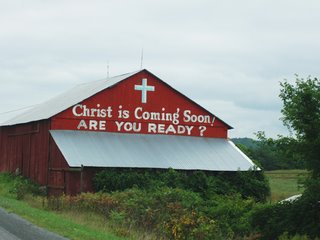 (a graveyard in Bosnia...love the shape and color of the grave markers!)
(a graveyard in Bosnia...love the shape and color of the grave markers!)
This morning I was in the beginning stages of laying out the composition of a new painting, the surface being a found one; a shellaced wooden door with random splashes of brushed white paint on one side, which seem to be simply from the door painter cleaning his or her brush on the inside of the door. My compositional elements were two stencils; one a circle with a dimple in one side, much like the top part of a heart shape, and the second a fat tear drop shape. My plan was (and is; I'm not finished yet) to lay out a plethora of these, each successive step a reaction to the previous element.
The first shape I laid down was the tear drop; with this element I reacted against the weight of the brushy white shapes, which are just left of the center of the panel (being a door set "sideways"). OK. The next step was to take the second shape, the dimpled circle, and react now to TWO other things (not counting the colors, which have not been considered yet). OK; that wasn't too difficult. Again, I picked up the tear drop; not TOO much thought needed; still largely an intuited step, but became more difficult to consider. By the time the next application came around, I was slowing down. It was becoming very difficult to intuitively place a shape based on all the other elements around it.
So, I decided to stop there, and make it even harder for myself...add COLOR! In some ways, this may provide clarity, but will most likely slow down the decision process...which is largely connected to my way of working. This brings to light an important balance, which should play a large part in each of the multitudes of individual decisions of which an art work consists, up to its ostensible conclusion: one must balance care with caprice.
Simply put, do I err on the side of agonizing every minutia of the process? No; this usually produces a particularly anal type of work. On the other hand, do I, in a cavalier fashion, proceed blindly, and "let God sort out the dead"? No; this alternate swing in the other direction often produces adolescent, slap-dash works. Thus, for me, a balance is important. Granted, some work by certain artists, depending on their skills, may look one way, but was produced with the opposite mindset. Cy Twombly is one who comes to mind.
Intentionality...and experience plays a large part in this. It brings to mind a story I heard once about a Chinese artist who was asked by a rich man to paint him a picture of a rooster. After waiting patiently for several years, the rich person frustratedly asked the artist when he would ever get around to giving him the painting he'd requested. The artist, then and there, simply pulled out some paper, a brush and ink, and in a few minutes did a beautiful, virtuosic painting of a rooster. The rich man became very angry, and asked why, if he did it so quickly just now, he had taken so long in getting him his requested painting. The artist did not respond, but waved him into his studio: the rich man was astounded to see all the walls covered with thousands of paintings of roosters. Only after all those paintings, could he fulfill the patron's request skillfully.
In the spirit of thoughts on composition, I've included some interesting (and morbid) pictures that I've had for a long time, but haven't used for anything...most of them use the compositional concepts of repetition and pattern.
(a swastika quilt...)
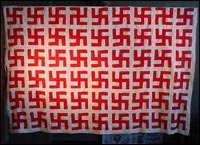
(another quilt, this one made from Klan hoods...sweet dreams!)
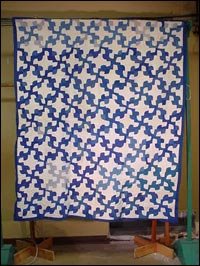
Read more...
